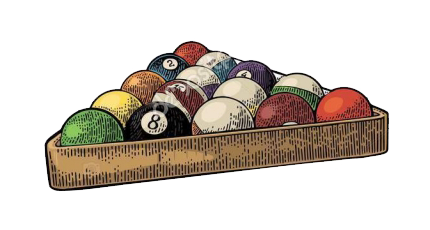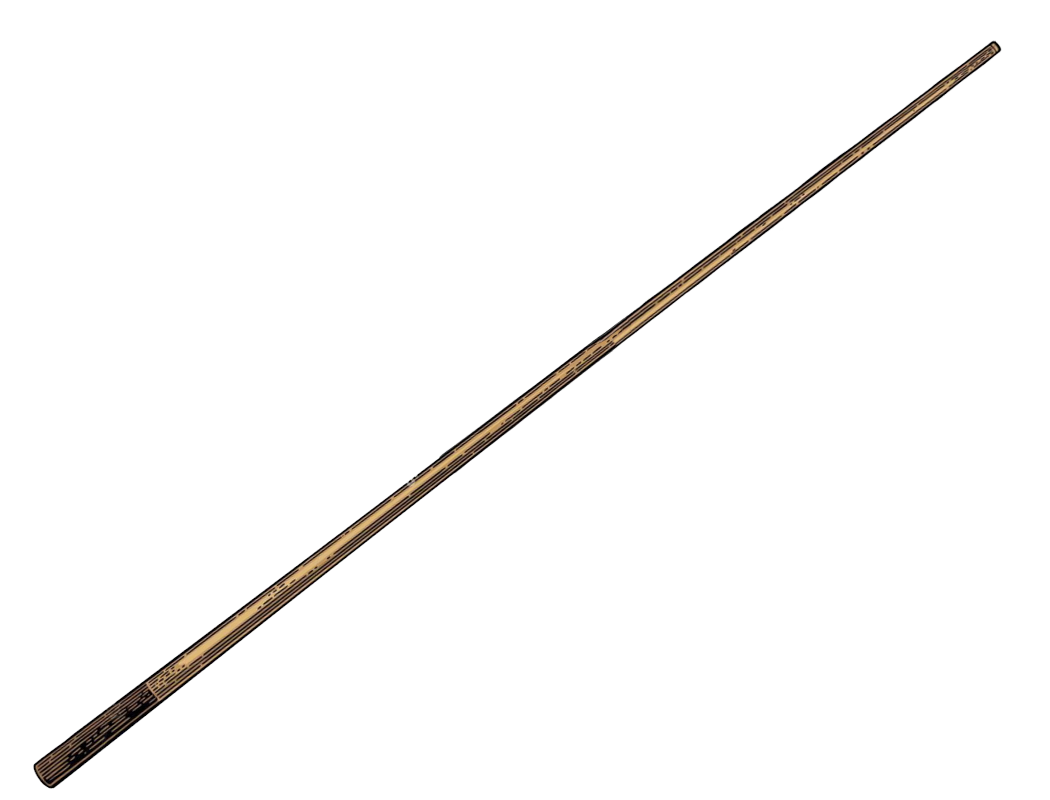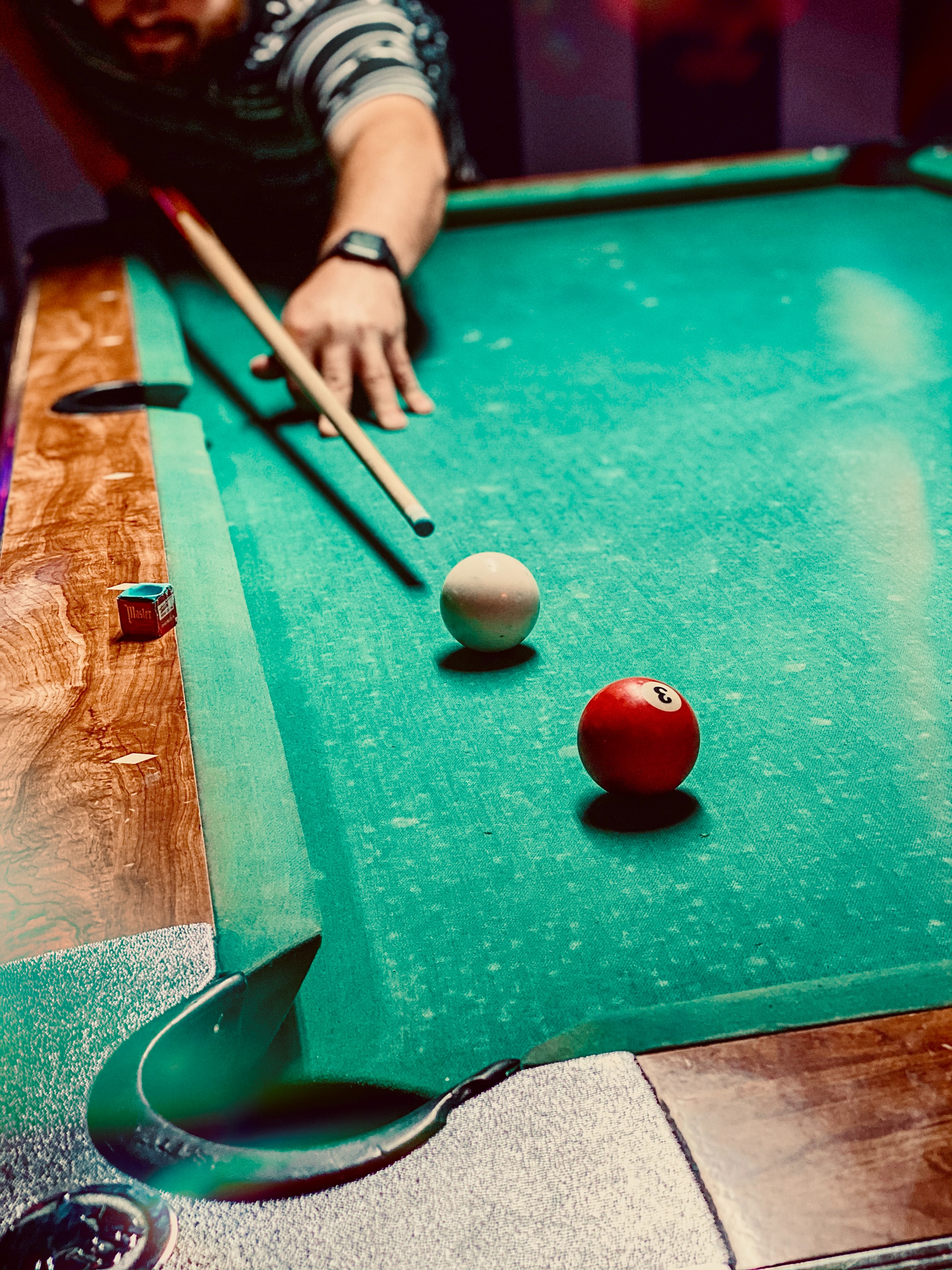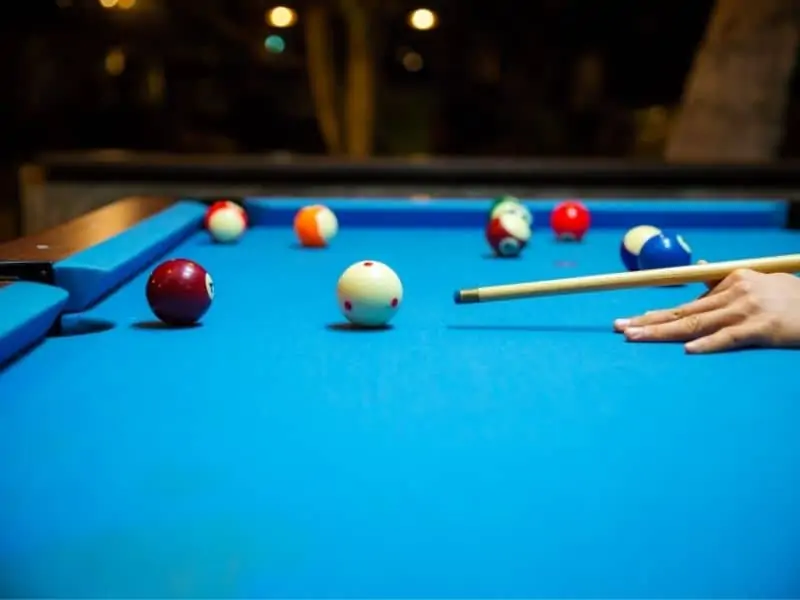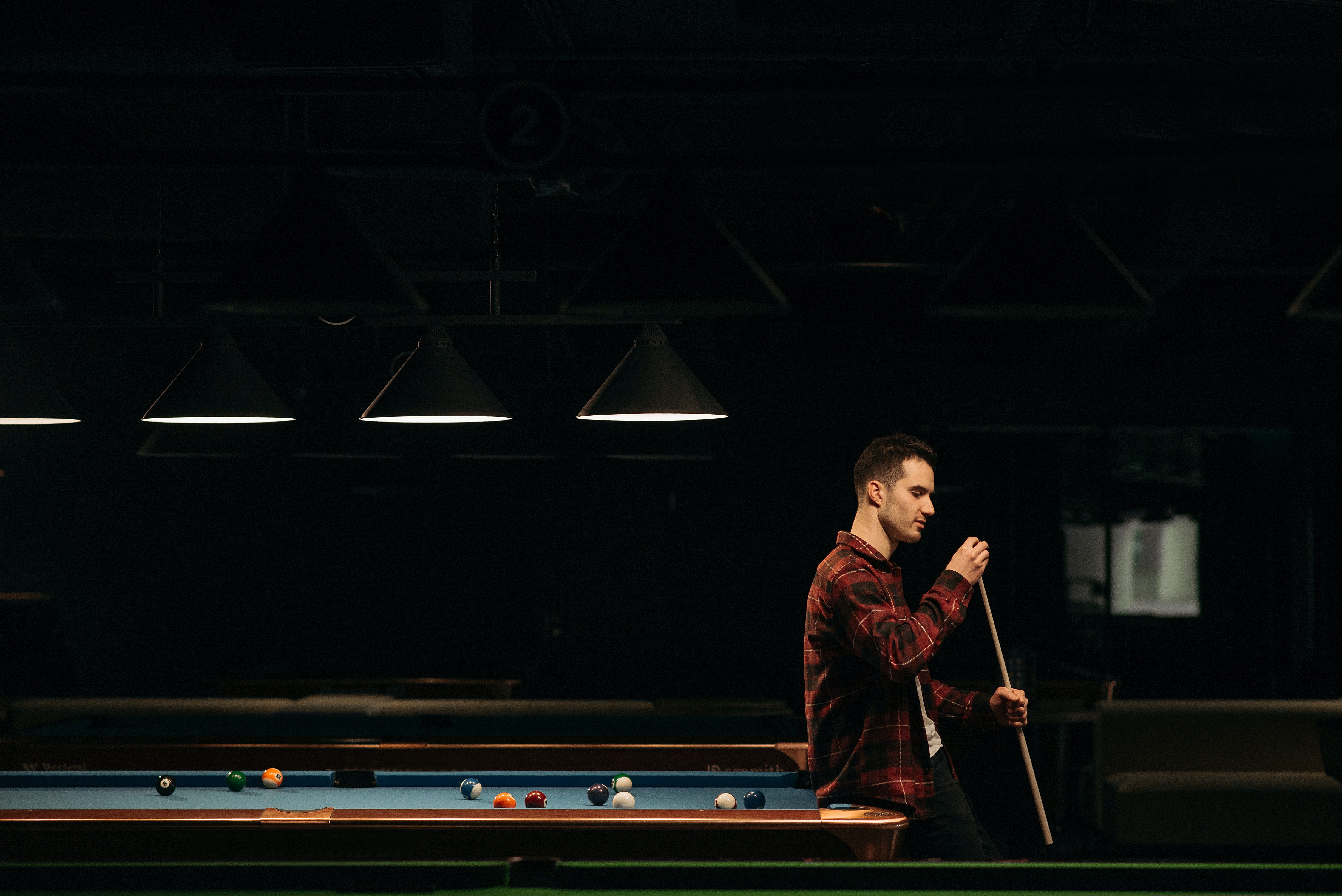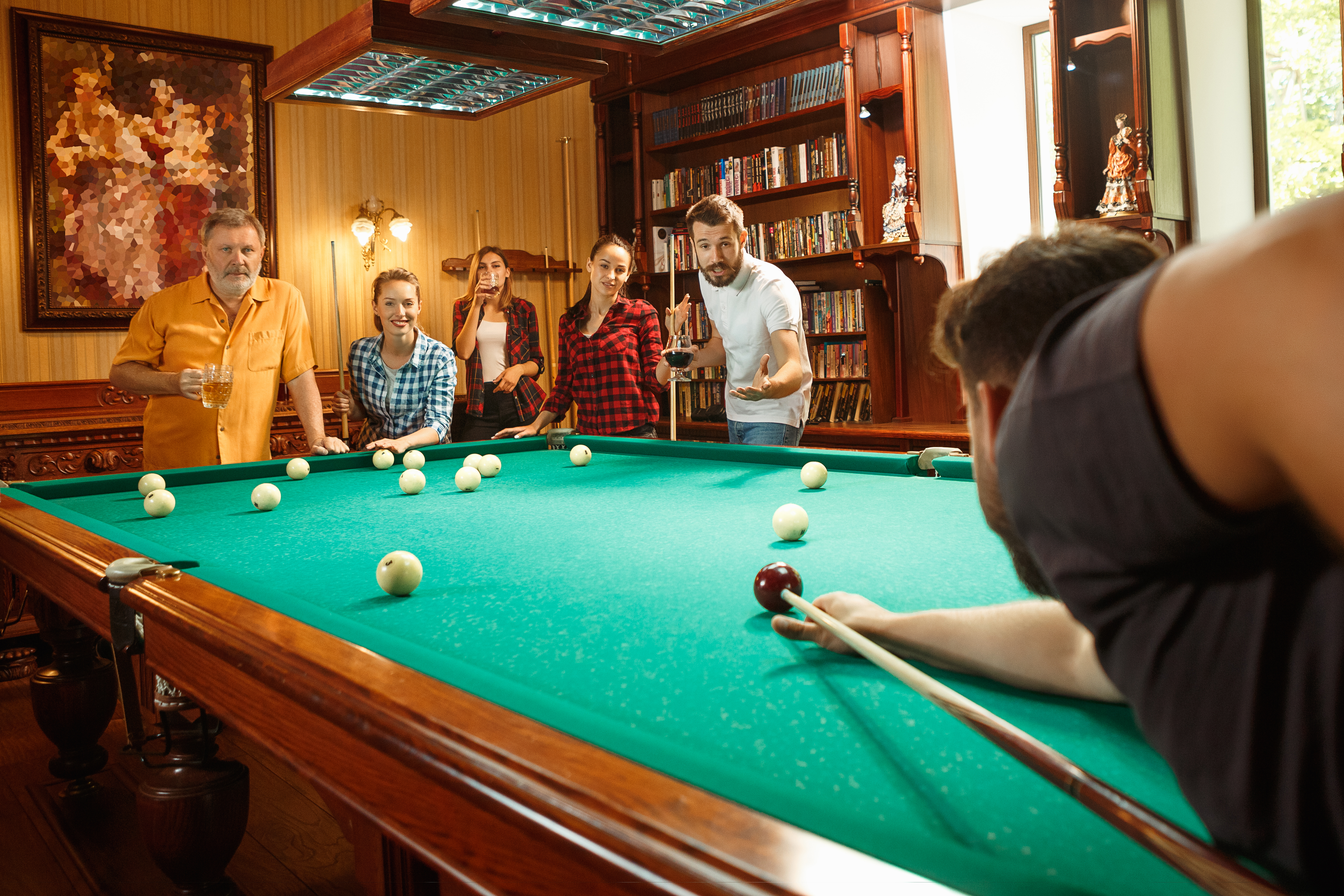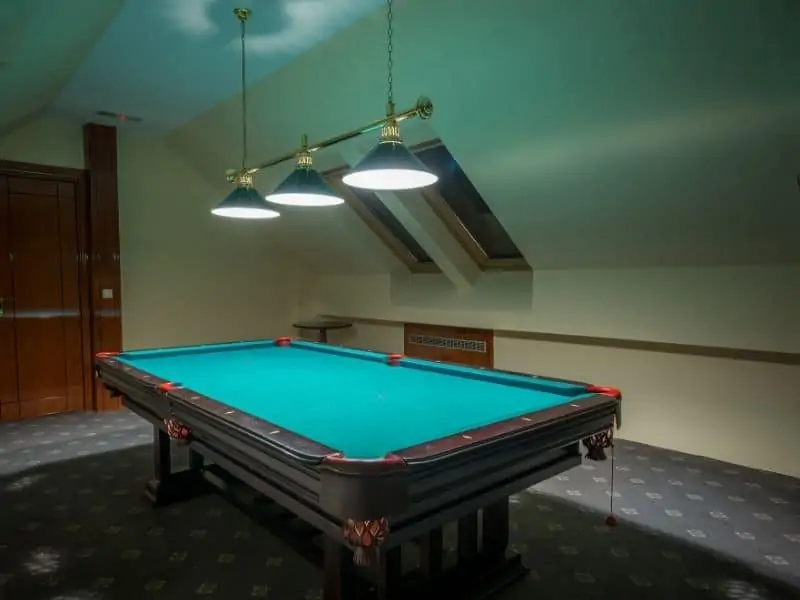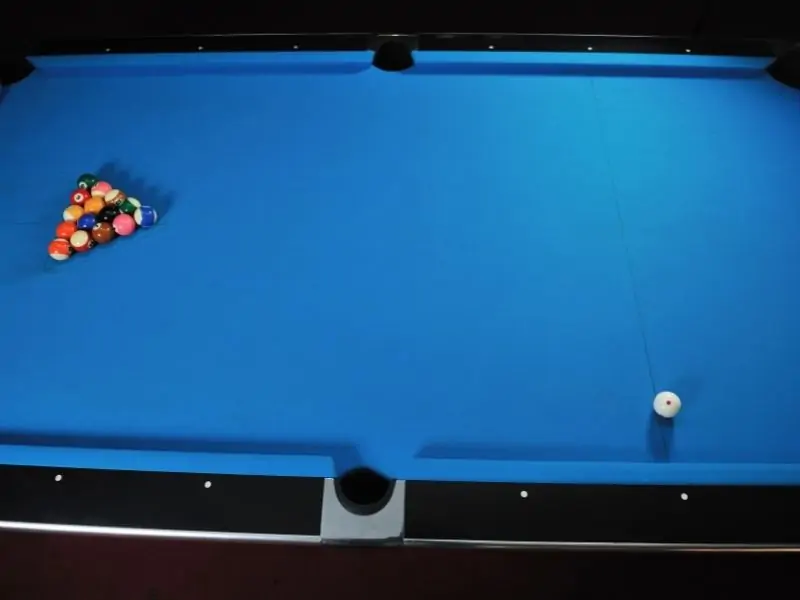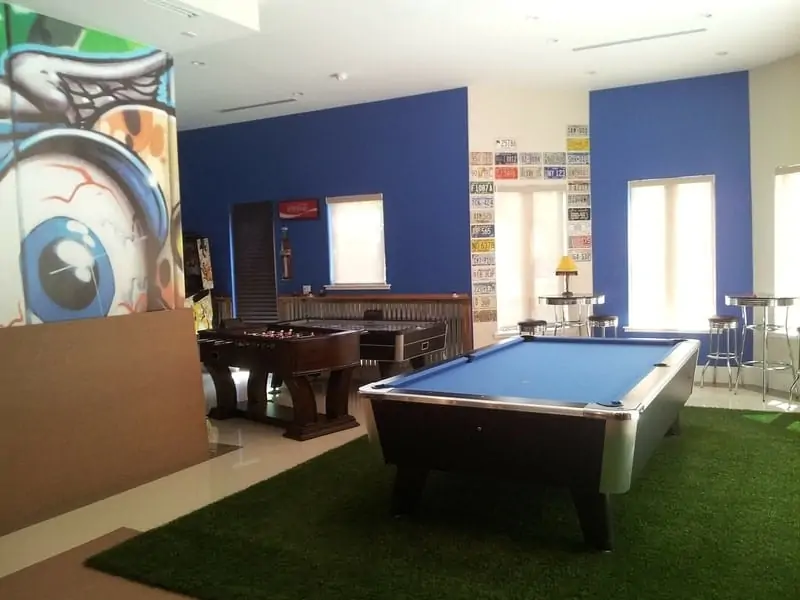In the past, one of the hardest things that I would have to deal with as a pool player was what to do when there were more three people who wanted to play a game. It’s not always that fun to be the third wheel waiting to play while watching two friends play. So, needless to say I’ve ended up playing a lot of cutthroat in my day.
Cutthroat is a version of pool that can be played with three or more people, with the goal to be the last person to have your balls remaining on the table.
Cutthroat Basics
Cutthroat uses a total of fifteen object balls labeled from 1-15 and the standard cue ball. Players will be given assigned numbers at the start of the game which will count as the group of balls under their control.
These groups usually look like 1-5, 6-10, and 11-15. The split can also work well with five players where the groups turn into 1-3, 4-6, 7-9, 10-12, and 13-15. Of course any random split of numbers can be used and it’s up to the players themselves to decide how they want to do it.
In truth the rest of the rules of cutthroat are very similar to something like 8-ball. Your goal as the player is to pocket your opponents’ balls into any of the 6 pockets on the table.
When you make a ball in, as long as it was not an illegal shot (something I define later in the article), you get to keep shooting. If a player has all the balls within their group pocketed then they are eliminated from play, unless someone commits a foul. At the end of the game whichever player has any number of their balls remaining is the official winner.
Racking Cut Throat
The rack in Cutthroat isn’t too hard. All you need is a standard triangle rack and to place the 1-ball at the top of the triangle, with the 6 and the 11 balls going in either of the other corners. The placement of the rest of the balls isn’t too important.
Once the rack is created it’s important to place it so that the one ball will be resting on top of the foot spot. This is the same spot where most racks are placed.
Naturally the cue ball will then be placed somewhere behind the head string. The head string is not a physical line that rest on the table but an imaginary one that’s created when players look at the diamonds on the side of billiards tables. As long as the player puts the cue ball below the diamond that’s closest to the middle of the table, then it’s okay to break.
The Break
In Cut Throat it’s important that whoever goes first is able to do something called an “open break.” An open break is where at least four of the balls separate from the rack and make contact with the cushions on the sides of the pool table. This is done so that the balls aren’t too cluttered in the middle.
However, even if someone puts all the power they have into a break it is still possible that the balls won’t go very far. If this is the case players should make sure that the rack was put together tightly. A good rack should look like someone glued the balls together with how close they are to each other.
Okay, now assuming that the rack was put together well,if the person who broke was unable to perform an ‘open break’, the next personis allowed to ask for a re-rack and attempt to break the balls themselves.
Claiming Your Group
Now, it is possible to choose your groups before youstart the game, the only downside is that when you go to break you might pocketin one of your own balls. The way that most players get around this is byclaiming groups in two different ways.
The easy way is that whoever just broke, assuming thatthey made a ball in on the break, will pocket one of the object balls on thetable and then verbally claim whichever group they want to be a part of. Oncethat person’s turn is over, the next person to go up will follow the sameprocess and pocket a ball before claiming what group they would like, whatevergroup is left would be given to the last person.
The harder way is to not choose a group until at leastone ball from two groups is pocketed. For example, let’s say the first playerpockets a ball from group 1-5, and then he pockets a ball from group 6-10. Hewould then choose to make his group 11-15 because it has the most ballsremaining. The person that follows then only has to pocket one ball beforedeciding which group from the two remaining he would like to play with.
Who Goes First?
Since being the third person in Cutthroat usually putsyou in a particularly bad position, this is one of the few times that I do notadvocate for being polite and letting others go first. Instead, I recommendeither using games of chance like a coin toss, or a card draw to decide whogoes in what order.
If players do not want to rely on luck, then I recommend something called the lag. Lag in pool refers to players hitting balls from one side of the table so that it bounces off the opposite cushion with the goal being to get their ball as close to the cushion on the original side from which they shot.
In this scenario, whichever player is able to get the closest to the cushion without having their ball bounce off of it is deemed the winner. This is something that can be done before any billiards game to decide who will go first.
Playing With Called Shots
Something that can change the whole way the game of Cut Throat is played is whether the group wants to play ‘called shots’ only. Playing with called shots means that the players in the game will specify which ball and which pocket the balls will go into. This is great for experienced players who are able to consistently determine where their balls will end up, but can lead to unintended fouls among newer players.
For example, if you are playing with called shots andyou make in an unintended ball, that shot would then be classified as anillegal shot, and the ball would be put back where it was and the originalplayer would lose their turn. Again, this is great if players are able to predictexactly where their ball will go.
What is a Legal Shot?
Depending on which ever version of the game you play, the definition of a legal shot stays the same. A legal shot in Cut Throat requires that the player makes contact with an opponents ball first, and then makes at least one ball make contact with a cushion. This is done to ensure that players aren’t trying to use a super weak shot to put the ball in a terrible position for the next person that goes up.
If you fail to take a legal shot and you make the ballin, then unfortunately that player’s ball will be put back in its original spotand the player who hit the cue ball will lose their turn.
What Constitutes a Foul?
Fouls in Cut Throat are pretty similar to fouls in any other version of pool. For easy reference I’m just going to jot them down below.
- Hitting the cue ball off the pool table.
- Double hitting the cue ball, i.e.accidently touching the cue ball twice after the first time it was hit.
- Push shots, where the ball is pushed asopposed to struck.
- Any movement to the cue ball or the objectballs, either using the end of the cue stick or the player’s hands.
- All forms of illegal jump shots, such asscoop shots or any other variations listed by the bylaws of pocket billiards.
If a player commits a foul during their turn and theirshot is deemed to be an illegal shot, then whatever ball they made in will bereturned to its original location and that player will lose their turn. If thatplayer also happened to have made their own ball in by accident on that turn,their ball will stay within in the pocket and they will still lose their turn.
Scratching
Scratching is particularly important in Cut Throat because of what it means for the other players. If a player scratches on the cue ball, either by jumping it off the table or accidentally pocketing it, the other players on the table are allowed to return one of their pocketed balls back into play. If the other players do not have any balls within the pocket then they simply do nothing and wait for their turn.
The player that follows the person who just scratchedwill then place the cue ball behind the head string in any position they likeand play their turn.
In Conclusion
Cutthroat is a great option for any group of friends that are looking to find a competitive way to play pool while making sure that no one gets left out. I highly recommend playing it at least once, because there’s nothing more hilarious than feeling like you’re out of the game and your friend’s mistake bringing you back in.
